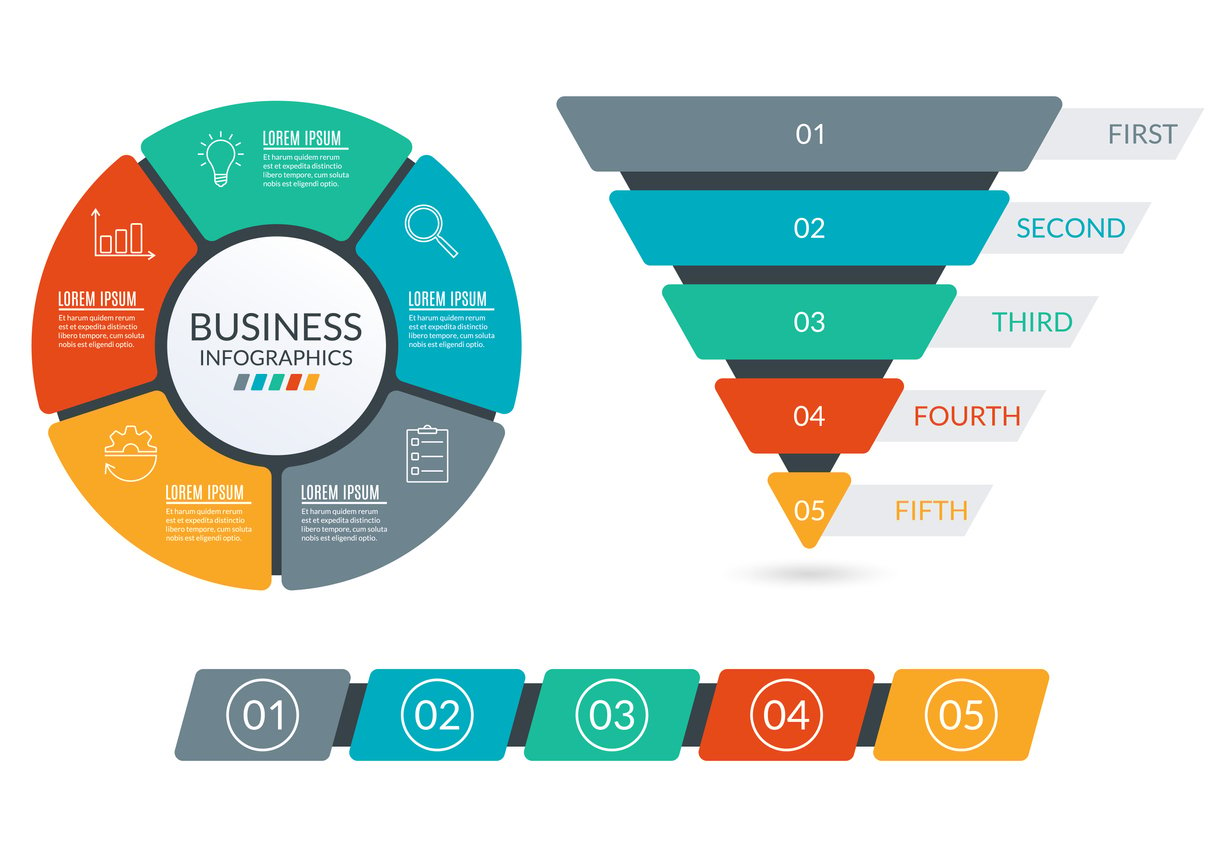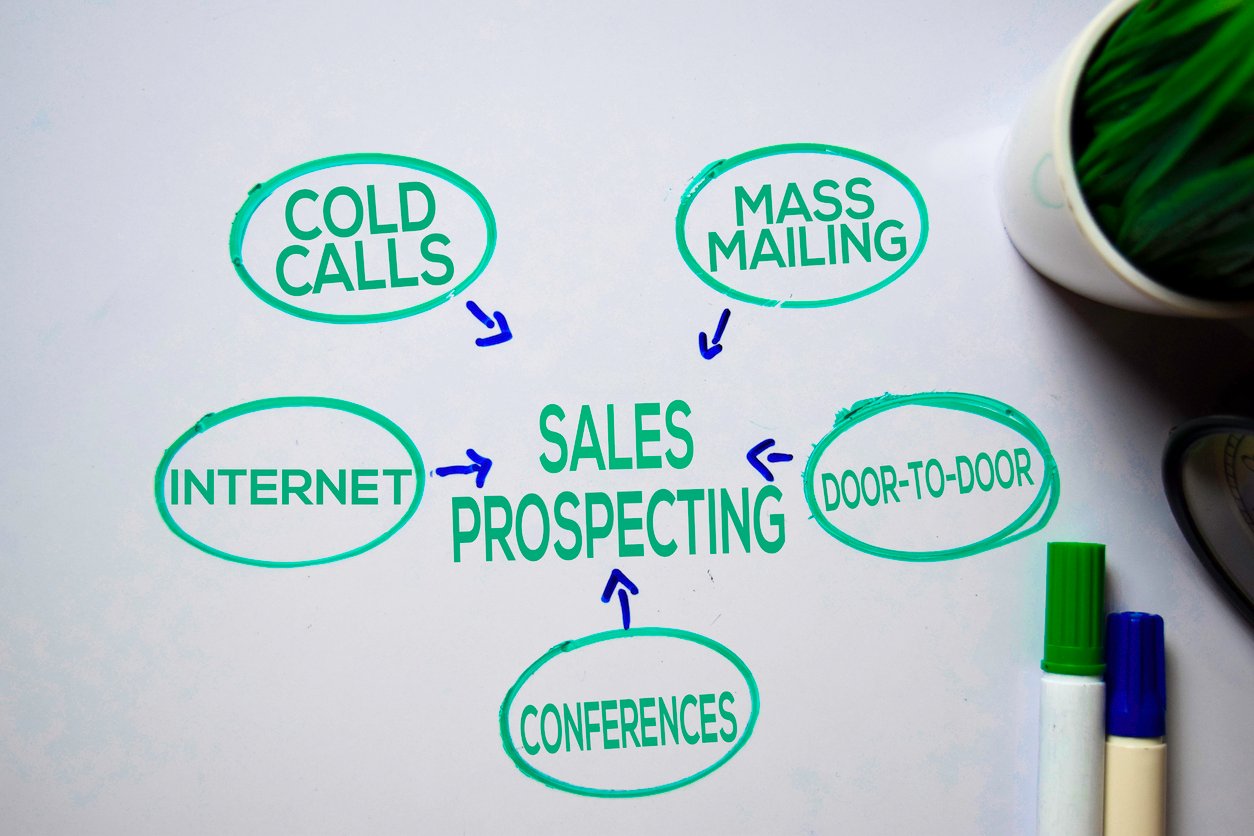
7 Strategies to Hit Your Sales Quotas Like a Pro
 Updated on
Updated on
By Ringy
Table of Contents
Table of Contents
Did Q1 hit you hard?
Countless calls, emails, and demos only to be faced with “No, thanks.” Then you have to do it all again. And again. When it's finally over, it's Q2, and it's time to start from the beginning.
We understand that you're probably screaming:
“Why are sales quotas important anyway?!”
It might seem frustrating having sales quotas, different types of sales quotas, the similar-but-still-different sales quotas, and targets – but we assure you they're all important.
Furthermore, sales quotas don't have to be a headache. In this post, we're giving you 7 solid, creative strategies to help you hit your sales quotas quarter after quarter, as well as different types of quotas, and how to use a CRM to set them.
What Are Sales Quotas?
Sales quotas are monetary goals that salespeople must reach by the end of a predetermined period. Usually one month or one quarter.
A couple of facts about sales quotas:
- Quotas are set by an individual's sales manager
- The sales rep usually gets a performance bonus for hitting his quotas
- Quotas are just about the most referenced topic in sales movies and TV shows
Well, it's true, isn't it?
Let's clear up another thing as we define sales quotas – they aren't the same thing as sales targets or sales goals.
Sales goals are company-wide. For example, an organization may set a sales goal of increasing revenue by 20% by the end of the year. But in order for the business to reach that goal, they need sales reps with quotas, and if those quotas are reached, then the company goal will be attained.
Sales targets are generally for teams instead of individuals and detail how many products or packages need to be sold in order to meet quotas, and then meet goals.
Quotas, targets, and goals are part of your company's sales strategy.
How to Set Sales Quotas and Targets
A solid CRM is essential when setting sales quotas and targets. It can help you calculate conversion rates, and drop-off rates, and give you an outline of your sales pipeline.
“Essential?” we hear you ask. “I've set so many sales goals without a CRM! So did my father! And his father before him!”
Listen, just because it's the way we used to do it doesn't mean it's ideal.

It turns out the past was kind of weird.
CRMs are outstanding tools for sales teams. In fact, businesses that leverage CRM software see an increase in:
- Sales by 29%
- Sales productivity by 34%
- Sales forecast accuracy by 42%
So how does a CRM help set quotas in sales management? There's a variety of metrics that CRMs can measure and keep track of:
|
Sales performance metrics |
Sales activity metrics |
|
Sales quota attainment |
Calls |
|
Deal win rate |
Emails |
|
Average deal size |
Demos |
|
Revenue growth |
Appointments |
These metrics are key information when designing most types of sales quotas. They'll help establish your company's baseline (minimum standard of performance) and your sales team's performance levels. Plus, they'll help you determine your company's growth goals.
CRMs can help you build an entire sales plan, including an executive summary, sales goals, review of performance history, market conditions, and a whole lot more.
Why are Sales Quotas Important?
Quotas in sales management are important because they're data-driven, and motivational, and make teams more productive and companies more profitable.
And companies that make data-driven decisions are 5% more productive and 6% more profitable than their competitors.
So why are sales quotas important to sales reps?
Because they usually get a financial reward for attaining them.
No, but really – sales quotas can be very beneficial to salespeople. Sales quotas and targets can:
- Motivate reps and keep them accountable
- Set achievable goals that still provide a challenge
- Unite teams and individuals with the sole goal of reaching your company's objective
- Help monitor sales rep performance and activity
- Increase sales
They may seem small or insignificant, but sales quotas are an important piece of a larger puzzle. They add up.
6 Types of Sales Quotas in Sales Management
There are many ways to measure quotas depending on your product, service, and company structure. Some may prefer to go with a volume-based quota (e.g. 10 trumpets), but others benefit from a profit-based quota (e.g. $5,000 / month).
We've gone with the 6 most common types of sales quotas. Although, every type of quota can be measured and monitored by a great CRM like Ringy. ;)
1. Activity quota
Activity quotas are usually assigned to BDRs and SDRs who are a part of a larger sales team. In general, it ensures that they're providing valuable support to the sales reps that are the ones closing deals.
The “activity” part of “activity quota” can mean many different things:
- Phone calls
- Follow-up emails
- Meetings scheduled
- Product demos given
Activity quotas are great for bigger sales teams where not every team member can be winning deals. They're also beneficial for businesses with longer sales cycles.
2. Volume quota
Volume quotas motivate reps to sell as much as they can in the specific time period set because it's based on the number of product. Not profit, revenue, etc.
For example, a sales rep could have a quarterly goal of selling 15 trumpets, 10 drum sets, 5 cellos, and 76 trombones.
What? Are we the only ones who like The Music Man?
It's also fairly common to get a commission on each product sold and then receive a bonus upon reaching the quota.
3. Profit quota

A gross profit quota is measured by subtracting selling expenses and the cost of goods from the final deal price. Your quota would be calculated by factoring in the total cost of the product you sell from the revenue made.
An example would be a sales rep with a profit quota of $3,000. If they sell a product for $350 but the cost to produce the product is $50, their quota would now be 300/3000.
A profit quota incentivizes your sales team to push products and services that have a higher profit margin because it will add the most to their quota.
4. Forecast quota
Forecast quotas are given to specific sales territories and teams and are calculated by a region's historical performance, the past performance of your teams and reps, and your expected business growth and revenue.
This is basically using past data to forecast an estimated revenue and shoot for that. You can use a lot of different metrics depending on your goal, but this quota is extremely common for location and region-based quotas.
So a CRM with sales rep tracking will give you valuable insights into the territory.
5. Revenue quota
The simplest and most common. Does your company need to make $20,000 this period? And you have 8 sales reps? Then they each have a revenue quota of $2,500.
Done and done. Simple as that.
Revenue quotas are flexible – you need to hit a certain number. This means that even if a rep makes only one deal - if that deal brings in the right amount of revenue - they meet the quota.
This makes it easy for reps to reverse engineer the quota by breaking down how many of each product they'd have to sell to attain the quota.
And sometimes it's all in how you look at it.
6. Combination quota
It's right in the name: a combination of different quotas. A combination quota might include two to three different types of sales quotas to help break down goals into smaller milestones. It makes a quota feel more attainable.
For example, a team with a volume/activity combination quota might have a quota that looks like this:
|
Rep |
Products to be sold |
Calls to be made |
Emails to be sent |
|
Kim |
75 |
45 |
80 |
|
Charlie |
70 |
50 |
85 |
Having a few different checklists help reps consider quality over quantity. Just try not to stack too many quotas at once – that's just plain confusing.
Handling combination quotas for your team is a lot simpler with a sales CRM.
7 Strategies to Achieve Sales Quotas

You know why you need them. You've chosen the types that best suit your business.
Now you need to know how to consistently hit sales quotas.
Here at Ringy, we deal in software. So is it difficult to hit software sales quotas?
Software quotas – and any other – are a breeze with these tips.
1. Qualify on quality, not quantity
Do you like our alliteration? Say that five times fast.
But seriously, it's hard to get out of the mindset that more = better.
After all that blood, sweat, and prospecting, each lead can feel like a precious treasure that you never want to let go of. We know. We've been there.
But truthfully? You'll hit quota more consistently if you prioritize higher-quality leads that are the perfect fit for your business. You want leads that are chef's kiss. 🤌
Why? Because you spend loads of time, energy, and money smooth-talking a lead that was never going to make a purchase in the first place. So why not pour all that effort into your perfect customer?
2. Communication across your team
Good communication isn't just something a couple's therapist recommends.
Talking with your team is critical when going through sales opportunities as leads move through your pipeline. Make sure the right info is shared with your AEs, like:
- Use case
- Timeline
- Stakeholders
This will make your AE's follow-ups and conversations go more smoothly. It's also a good idea to monitor activity with your CRM so that if a qualified lead hasn't been contacted yet, you can throw a suggestion your team's way to do so.
Even superstar, high-performing sellers can need a little encouragement sometimes. In fact, companies that communicate effectively are 4.5x more likely to retain top performers.
Clear communication is an important part of great sales coaching. And great sales coaching positively affects sales productivity, quota attainment, and overall revenue.
3. Create urgency that isn't discount-based
Urgency doesn't just have to be “Buy in the next 20 hours and receive 20% off!”.
In fact, we've kind of taught prospects over the years that the longer they hold out, the better deal they'll get. Which isn't great for reps trying to attain their sales quotas.
But there's a way to put urgency into a prospect so they'll close a deal sooner rather than later. Make the urgency something that isn't price-based.
For example, if your prospect needs your software for an event taking place on July 10th, and they need to send out promotional material a month in advance (so June 10th - you keeping up?), they'll need to finalize the deal by May 10th if your service takes a month to set-up.
So the urgency is: close by May 10th.
If you set a deadline that isn't discount-based, prospects will feel the pressure to close due to service needs. They won't feel like holding out until the end of the month is the best solution anymore.
4. Keep up with good leads and don't let ‘em go
It's easy to forget good leads when they aren't ready to talk yet. You put them on the back burner and think: “I'll get back to that later…”
But when's later?
You'll want to ensure you're keeping track of great leads and following up with them frequently. Keep them warm until they want to talk with an account executive.
A CRM is super helpful with this process. Set yourself reminders every few weeks to touch base with a solid lead, or even set automated follow-ups to send themselves out to your leads.
Then when that prospect is ready to talk, use your CRM to dig up all your previous cadences so you have your customer's entire history at hand.
The same goes for leads that went completely cold. If you haven't heard a flat “We're not interested,” then it's a good idea to reach out to those leads that never amounted to anything.
5. Never stop prospecting

You always need new opportunities. Prospecting shouldn't just be a “first of the month” kind of thing.
Set aside a few hours a week just for prospecting. When you turn up a few more additions to the pipeline, you'll be grateful you did later. Like stocking your freezer up with frozen pizzas.
All usual forms of prospecting can be great to work into a weekly schedule:
- Cold emailing
- Cold-calling
- Following-up on leads
- Checking in on referrals
- Social selling
Will it help you this period? Maybe. Will it help your next period? Definitely.
The more you prospect, the more opportunities you create for the future. And down the road, when you're really hungry…you'll be so relieved to have those pizzas in the freezer.
6. Setting clear goals and processes
It isn't surprising that being vague about your goals is a bad idea.
Simply telling your team that you're going to reach quota by “calling more” or “being more persuasive with leads” isn't going to cut it.
Think about it. What would you do with that information?
Instead, try laying out something concrete like:
- Make 15% more calls than last quarter
- Increase sales activity by 20% this period
- See 10% more lead responses by the end of the month
You want your goals to be clear, measurable, relevant, and time-based. It's more motivational and attainable for your sales team.
This is all a part of your overall sales process. And both your process and your quota goals can be easily created in your CRM using historical data and sales performance data.
7. Group incentive
Incentivizing is a great way to motivate. Who doesn't like the idea of a reward for hitting the quota?
But individual incentivizing encourages an “every man for himself” style of achieving.
Bob Phibbs, “The Retail Doctor”, speaks about this in a Facebook live video. He recommends individual incentives that can only be “unlocked” if you reach the company goal. He says this allows your team to share rewards as well as sharing risks, which boosts overall motivation.

The exact moment he starts talking about it is at 19:30.
This keeps the motivational push of a promised reward without separating your team.
Employees who are encouraged to work collaboratively in teams are shown to deliver 19% higher sales. You can see why having your reps work together will make you hit quotas consistently.
Teamwork makes the dream work.
For more ways to manage your team, check out our blog post on sales management software.
Sales Quotas Success Stories
Set your goals 2x to 3x your quota - Trey Simonton

Trey Simonton tells his story of how one year he made #3 out of 60 reps globally with this strategy.
Trey's quota was $1,200,000 – but he set his personal goal at $2,400,00. Double his quota. During a sales quota meeting, he requested data on average conversion rates for how many emails it took his team to get one sales call, and then how many calls it took with a prospect before they got a solid opportunity. He also retrieved data on his previous average close rates and his colleagues' close rates.
Trey then used all that information to calculate how much activity he'd need to put in per week in order to achieve his lofty goals.
At the end of the year, he hit $2,200,000 – 92% of his personal goal.
James Cameron once said: “If you set your goals ridiculously high and it's a failure, you will fail above everyone else's success.”
And he directed The Terminator so he must be right.
Trey says “aim high” is a great goal, but you have to know what that means. And using historical data and stats combined with a doubled or tripled personal goal helps you figure out what “high” is.
Hogan Assessments' key sales characteristics
Personality assessment and leadership development company, Hogan Assessments, collaborated with a healthcare manufacturer to identify the traits most often associated with sales success.
They identified four key characteristics that the highest performing reps had:
- Hardworking
- Results-oriented
- Objective
- Practical yet innovative
Probably seems obvious, huh? But it's true. The salespeople that consistently showed these qualities had higher sales focus and met their sales quotas effectively each period.
When the healthcare company used the recommended profile while choosing sales reps, they were 2x as likely to choose reps that could attain quota after quota.
A CRM gave Acacia measurable, repeatable success
Acacia, a leading commercial facilities maintenance and improvement service provider, had a revenue goal of $5,000,000. And they knew they needed better tools in order to track all the sales activity needed to reach that goal.
It would need to track sales processes by measuring performance against predetermined sales objectives. Collecting data like sales quota by product, employee, and timeline.
This case study describes how Acacia was able to work with a business solutions company to design the perfect tracking system for their CRM. Just by having their initial revenue target, they were able to use data to assign successful quotas with respect to employees, timelines, and products.
The result? Acacia now had measurable, repeatable success because of easy-to-access, easy-to-use CRM tracking and data. Managers were satisfied with the control they had overreaching goals, as the new system allowed them to monitor lead conversion and the creation of new opportunities.
It helped them decide who, when, and where the sales team needed a push in order to reach their financial goals and meet their company target of $5,000,000.
You can see how a CRM really helps out your sales performance management, huh?
Frequently Asked Questions
“What is an example of a sales quota?”
Sales quotas come in many flavors. They can be daily, weekly, quarterly – or even yearly.
Depending on what types of sales quotas are being used, they could be any of the following:
- $20,000 made in one month
- 100 sofas sold in one quarter
- 20 phone calls made daily
“What is the main purpose of sales quotas?”
The main purpose of a sales quota is to increase sales rep motivation by giving each individual solid objectives to work on. It helps salespeople perform at their best ability and helps support the revenue goals of the company as a whole.
“Do sales quotas work?”
For the most part: yes! Just make sure you track past rep performance, and previous quotas, and use that data when creating sales quotas. You don't want quotas that are unobtainable – but you also want them to actually bring in the revenue needed.
Use data to find a cozy middle ground. Sales teams with challenging, but attainable, quotas flourish.
Get Ready to Crush Those Quotas

You're now armed and ready to set next quarter's sales quotas and targets with accuracy using your trusty CRM. CRM software will help:
- Review past performances
- Measure rep success so you can set from the bottom up
- Estimate projected growth of the company
You can then track and monitor your quotas, communicating with your team when it's time to nudge a warm lead or re-awaken a cold one. With clear, outlined goals and solid, group incentives, you and your sales team will be crushing your quotas.
If you need recommendations for an excellent CRM to help manage your sales quotas and targets, request a demo with Ringy. Our representatives will be more than happy to tell you in-depth how beneficial it can be.

Skyrocket your sales with the CRM that does it all.
Calling? Check. SMS? Check. Automation and AI? Check. Effortlessly keep in touch with your customers and boost your revenue without limits.

Take your sales to new heights with Ringy.
Sales in a slump? Ringy gives you the tools and flexibility you need to capture leads, engage with them, and turn them into customers.
Subscribe to Our Blog
Enter your email to get the latest updates sent straight to your inbox!
Categories
Related Articles
































































































